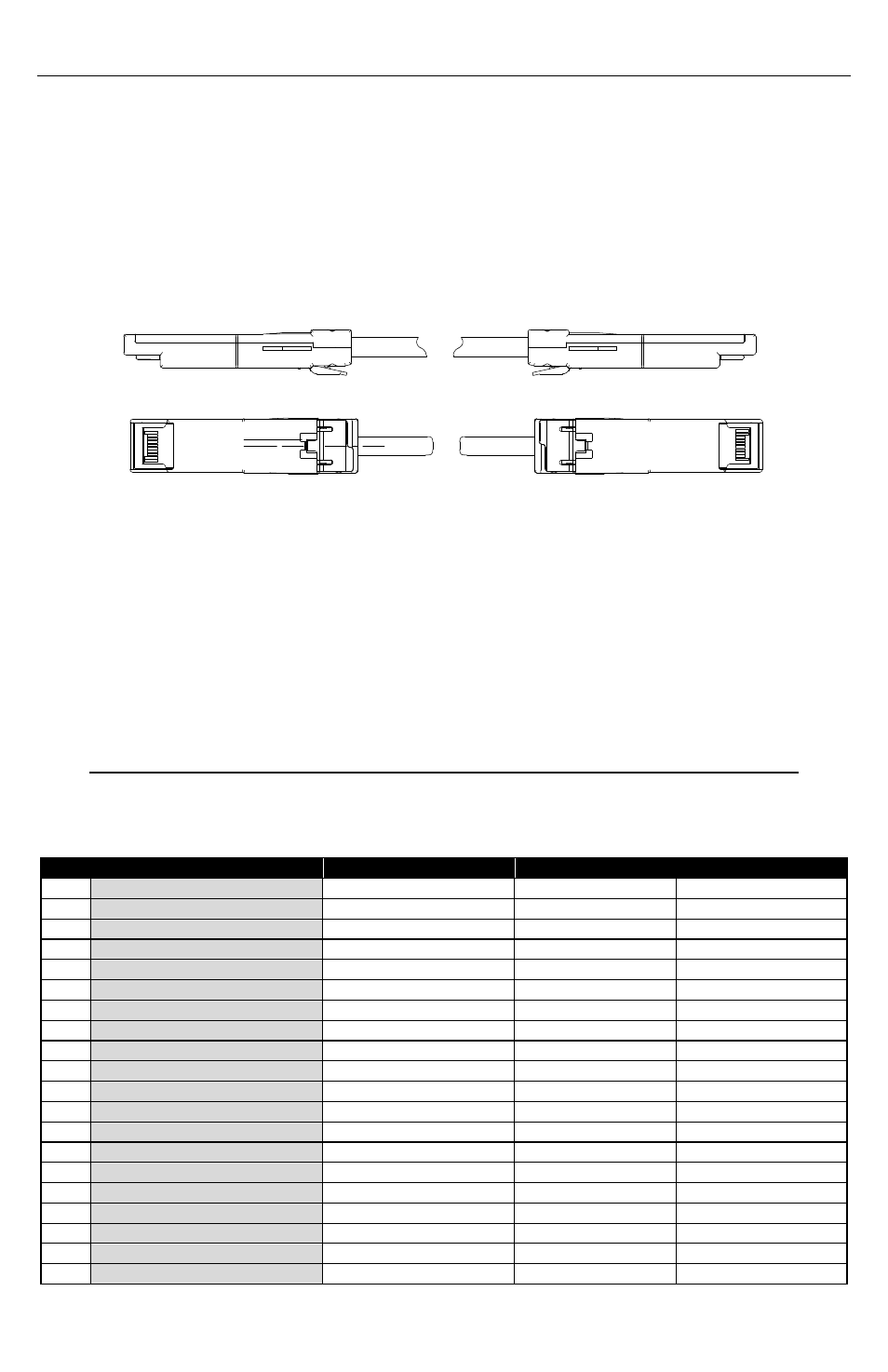Additional information, Bonding units, Sfp msa compliance – FiberPlex TIS-8632 User Manual
Page 13

Page 11
Additional Information
Bonding Units
Two TIS‐8632 can be bonded together locally to make the equivalent of an 8 Copper x 2 fiber switch by using
an SFP Passive Cable Assembly like the FiberPlex FC‐QDAXX1‐0‐0.5M. These passive cables are terminated
with SFP compatible connectors and are considerably cheaper than using a pair of optical modules with a fiber
jumper. The cables are only useful for short connections.
In this configuration, one SFP port on each TIS‐8632 is occupied by the Passive Cable Assembly leaving one SFP
port on each TIS‐8632 that can still be utilized for optical modules. This also results in 8 local 10/100/1000
copper ports.
Figure 6 Representative Drawing of an SFP Passive Cable Assembly
SFP MSA Compliance
The SFP Multisource Agreement (MSA) is an agreement that was drafted among competing manufacturers of
SFP optical modules. The SFF Committee was formed to oversee the creation and maintenance of these
agreements including the SFP MSA designated as INF‐8074i. This agreement describes a mutually agreed upon
standard for the form and function of SFP modules. However, not all SFPs produced are MSA compliant. The
MSA provides for a transceiver (TX/RX) pinout. Other industries such as broadcast had the need for dual TX
and dual RX SFP for uni‐directional applications such as video. Naturally, a non‐MSA standard was introduced
allocating pinout assignments for dual output and dual input I/O configurations. In addition, the some of the
internal serial communication pins were reassigned.
The TIS‐8632 will only accept MSA compliant SFP modules which support a 1.25 Gbps data rate.
Pinout Comparison Chart
PIN
Transceiver (MSA)
Transceiver (Non‐MSA)
Dual TX (Non‐MSA)
Dual RX (Non‐MSA)
1
VEE
VEE
VEE
VEE
2
TX_FAULT [VEE]
VEE
NC
Rx2‐
3
TX_DIS
NC
NC
Rx2+
4
MOD_DEF(2) ‐ SDA
VEE
VEE
VEE
5
MOD_DEF(1) ‐ SCL
SCL
SCL
SCL
6
MOD_DEF(0) – PRESENCE [VEE]
SDA
SDA
SDA
7
Rate [NC]
VEE
VEE
VEE
8
LOS
RX1_LOS
Tx2+
NC
9
VEE
NC
Tx2‐
NC
10
VEE
NC
Tx2_DIS
NC
11
VEE
VEE
VEE
VEE
12
RD‐
Rx1‐
NC
Rx1‐
13
RD+
Rx1+
NC
Rx1+
14
VEE
VEE
VEE
VEE
15
VCC
VCC
VCC
VCC
16
VCC
VCC
VCC
VCC
17
VEE
VEE
VEE
VEE
18
TD+
Tx1+
Tx1+
NC
19
TD‐
Tx1‐
Tx1‐
NC
20
VEE
Tx1_DIS
Tx1_DIS
NC
